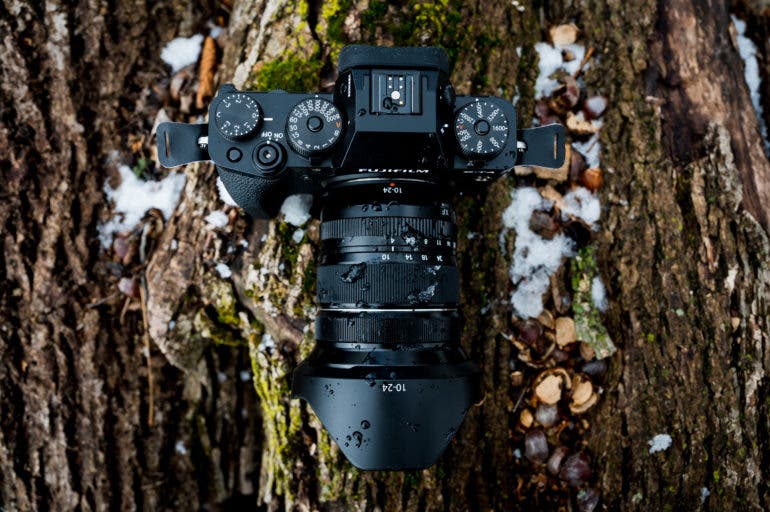Last year, I ditched my DSLR for the Fujifilm XT4. Several weddings later, I’m still in love with the camera and, in particular, the colors profiles that have cut my editing time in half. I don’t miss my presets that sometimes worked and sometimes created awful skin tones. I can apply the Astia color profile to the RAW, make a few minor exposures and white balance tweaks, zap any random zits, and I’m done. After more than a year with two bodies, I figured the Fujifilm XT4 review was due for an update from a long-term perspective and the latest firmware updates.
The reason I was drawn to Fujifilm was the colors, which isn’t surprising; most Fuji-tographers are always talking about ‘dem tones. Prior to using the XT4, my clients would notice that I gave them green skin before they would notice full-frame bokeh. So, because I too like bokeh, I traded an f2.8 zoom for f1 and f1.8 primes, two bodies, and a dual camera strap. Now I didn’t have to give up all the versatility of a zoom. And if there’s anything I like as much as the colors, it’s the feel of metal prime lenses.
While I could talk about Fujifilm colors almost as long as my ten-year-old can talk about Minecraft, I know the XT4 isn’t perfect. If I were a wildlife or sports photographer, I would have chosen differently because there are faster autofocus performers, and the XT4 does best under ISO 6400.
“Prior to using the XT4, my clients would notice that I gave them green skin before they would notice full-frame bokeh.”
I’ve updated the Fujifilm XT4 review with long-term experience, the latest firmware, and an updated look at how the XT4 fits in with the newly launched XH2 and XH2s. Here is the Big Picture summary of the updated review:
The Big Picture
I review cameras for a living, and when it came time to upgrade my gear, I chose the XT4. That’s really saying something. The Fujifilm XT4 is a prime example of how good a camera can be when camera manufacturers listen to customer feedback. As the old adage goes, “Give the people what they want.” With the X-T4, that’s precisely what Fujifilm has done. The outgoing X-T3 was already a very capable camera (we gave it Editor’s Choice for a reason). The XT4 packs even more under the hood with the addition of in-camera image stabilization, a fully articulating touchscreen, and a larger battery.
The main reason I chose to shoot with the XT4 is the image quality. I save a ton of time on photo editing because the XT4 has great color profiles. Shooting with Astia, I struggle less with red or green skin tones. But, I also love the XT4’s ergonomics and the selection of metal prime lenses. I paired the camera with the 50mm f1, and I don’t even miss my full-frame DSLR with its 24-70mm f2.8 zoom lens.
However, if I shot a genre like sports or wildlife, I would have chosen a different system. The XT4’s autofocus is sufficient for portraits and even a low-light dance floor, but there are faster systems out there (and systems with great animal eye AF). Naturally, high ISO quality is also better from a full-frame camera system.
All of the new bells and whistles come at a price, however. With a US $1,700 MSRP for the camera body alone, the XT4 is fast approaching Full Frame territory in terms of pricing. Sony’s Crop Sensor flagship A6600, the XT4’s most direct competitor, can now be had for around US $1,200 (it launched last year with an MSRP of US $1,400). For half a grand less, you’re getting a comparably equipped camera in the A6600 with better overall autofocus performance (despite the XT4’s ability to shoot at a slightly higher FPS). The XT4’s sensor is also two megapixels larger than the A6600’s. Practically speaking, that’s a negligible increase in resolution. Crop Sensor lens selection is where Fujifilm commands a significant advantage over Sony. Let’s also not forget the ever-growing list of film simulations you have access to with the Fujifilm X-T4. All things considered, the Fujifilm XT4 is an outstanding choice for professionals as well as hobbyists serious about photography, as long as the higher price of admission is justified.



Leave a Reply